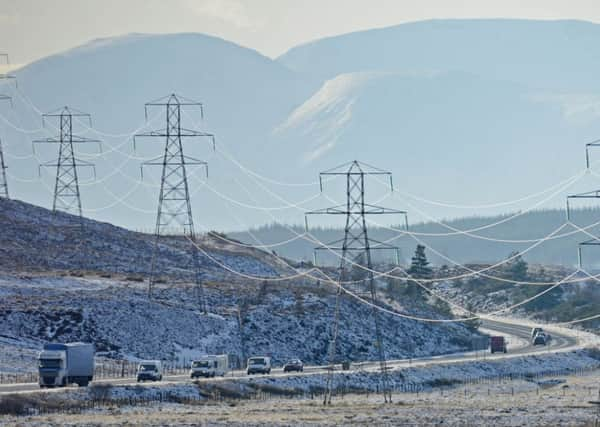Outdoors: Dalwhinnie’s ski history revealed


In my experience, about 99.9 per cent of mistakes fall into this category, possibly more. But there are also mistakes that have an unexpectedly positive outcome, and the other week, it transpires, I was lucky enough to make one of these.
Writing in this slot, I was trying to determine the spot on the map from which it would be equally easy to access all five of Scotland’s ski centres. My conclusion, after much faffing about with rulers and bits of string (and yeah, OK, RAC Route Planner) was that the village of Dalwhinnie was in fact Scotland’s ski central, with all the resorts between 45 minutes and one hour 38 minutes away.
Advertisement
Hide AdAdvertisement
Hide AdI was so pleased with myself for having done all my sums correctly (sums never having been one of my strengths) that I didn’t think to look into the skiing history of Dalwhinnie itself – and that, it turns out, was a mistake. If I’d done my homework, I would have discovered that Dalwhinnie has a rich skiing history in its own right – that, in the years immediately after the end of the Second World War, the Dundee Ski Club held an annual “Dalwhinnie Weekend”, usually in February, booking out both the Grampian and the Loch Ericht Hotels for the use of its members. Fortunately, however, Scotsman reader Alistair Lawson has been in touch to put me right.
“Not all members had cars in those days,” he explains, “and many made the journey from Dundee by train, changing at Perth. The daily routine was to use such cars as were available to ferry everyone the short three miles down the A9 to Drumochter Lodge, which was the take-off point for the excellent, deeply-incised, northwest-facing corries which could usually be counted on to hold the snow well. They still do.”
As the detail above suggests, Mr Lawson was himself a participant in these weekends.
“I recall, in the ‘Big Freeze’ of 1947,” he says, “being one member of a ‘creche’ who were given their first taste of skiing by being launched down the gentle snowdrifts at the side of Loch Ericht and out onto the snow-covered ice blanketing the loch.”
He also says he has “much more material available than just for a one-page slot in the weekend Scotsman” and has offered to put me in touch with some “survivors of that time”. All of which – combined with an, ahem, “fact-finding mission” to the deeply-incised corries of Drumochter Pass – sounds like an excellent project for the New Year. If only all my mistakes had such happy outcomes...
In other ski history-related news, I had a fascinating time at the Dundee Mountain Film Festival a couple of weekends back, supporting a film called The Beinn Ghlas Project, which I had a hand in making.
Although the film had premiered at the Kendal Mountain Festival in mid-November, it was fitting that it should have its Scottish premiere at Dundee. As its title suggests, the focus of the film is Beinn Ghlas – a Munro at the east end of Loch Tay which was the birthplace of competitive skiing in Scotland in the 1930s. Follow Loch Tay all the way to its eastern end, and then follow the River Tay all the way to the sea, and you eventually arrive at Dundee, so when our little filmmaking collective arrived at the Bonar Hall to introduce the film we were effectively following the path of the the water molecules we’d been skiing on back in the spring. Anyway, more to the point, there were evidently a few people in the audience who had skied Beinn Ghlas in its heyday, before purpose-built ski resorts started springing up elsewhere. One of these was Ian Steven, honorary vice president of Dundee Ski Club. He introduced himself after the screening and entertained us with some great anecdotes about racing against Norwegian skiers on Beinn Ghlas in the 1950s. He also said members of his club were in the process of editing together skiing footage from their own archives, so expect to see and hear more about Beinn Ghlas in the New Year.